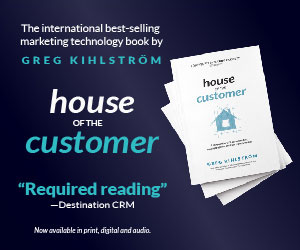This article was based on the interview with Curt Schreiber of VSA Partners by Greg Kihlström, MarTech keynote speaker for The Agile Brand with Greg Kihlström podcast. Listen to the original episode here:
Collaboration and diversity are key drivers of innovation in today’s enterprise business landscape and need to be embraced by leaders throughout an organization to drive competitive success. This is evident in the podcast transcript where the speaker discusses the evolving role of stakeholders in shaping business practices and the need for organizations to work across silos to meet these expectations. By bringing together diverse perspectives and expertise, companies can foster a culture of innovation and address complex challenges more effectively.
One of the main points highlighted in the podcast is the shift from prioritizing profits and shareholders to considering the needs and demands of various stakeholders. NGOs, customers, and employees now play significant roles in influencing business decisions. NGOs advocate for sustainability and equitable practices, customers demand transparency in manufacturing and service delivery, and employees have heightened expectations of their employers. These changing dynamics require organizations to manage stakeholders in a more integrated manner.
The challenge lies in the fact that many businesses still manage stakeholders in silos, with different departments responsible for investor relations, sales and marketing, supply chain management, and HR, among others. This fragmented approach hinders collaboration and limits the potential for innovation. To overcome this challenge, organizations need to break down these silos and encourage cross-functional collaboration.
Innovation is often seen as the responsibility of specific departments, such as product design or research and development (R&D). While these areas contribute to incremental improvements, disruptive and transformative ideas come from cross-collaboration. By connecting different groups within an organization to solve common problems, businesses can tap into a broader range of perspectives and expertise. This can lead to more innovative and disruptive solutions.
The podcast uses the example of the movie Apollo 13 to illustrate the power of collaboration and diverse thinking. When faced with a problem they hadn’t planned for, the engineers assemble the whole team into a room and work together to find a solution. This scene serves as a metaphor for how businesses should operate in today’s world. By bringing together diverse teams and focusing on solving problems collectively, organizations can achieve great things.
Furthermore, diversity in teams goes beyond just demographic representation. It encompasses diversity of backgrounds, experiences, and perspectives. When teams are diverse, they bring a wider range of ideas, approaches, and insights to the table. This diversity fuels creativity and encourages innovative thinking. By embracing diversity, organizations can tap into the full potential of their workforce and foster a culture of innovation.
Collaboration and diversity are essential drivers of innovation in today’s business environment. Stakeholder design recognizes the interconnectedness of businesses and their stakeholders and seeks to optimize outcomes for all parties involved. By breaking down silos and encouraging cross-functional collaboration, organizations can harness the power of diverse perspectives and expertise. This collaborative approach, coupled with a diverse workforce, fosters a culture of innovation and enables businesses to address complex challenges more effectively. Embracing collaboration and diversity is crucial for the long-term success and sustainability of organizations in today’s world.











